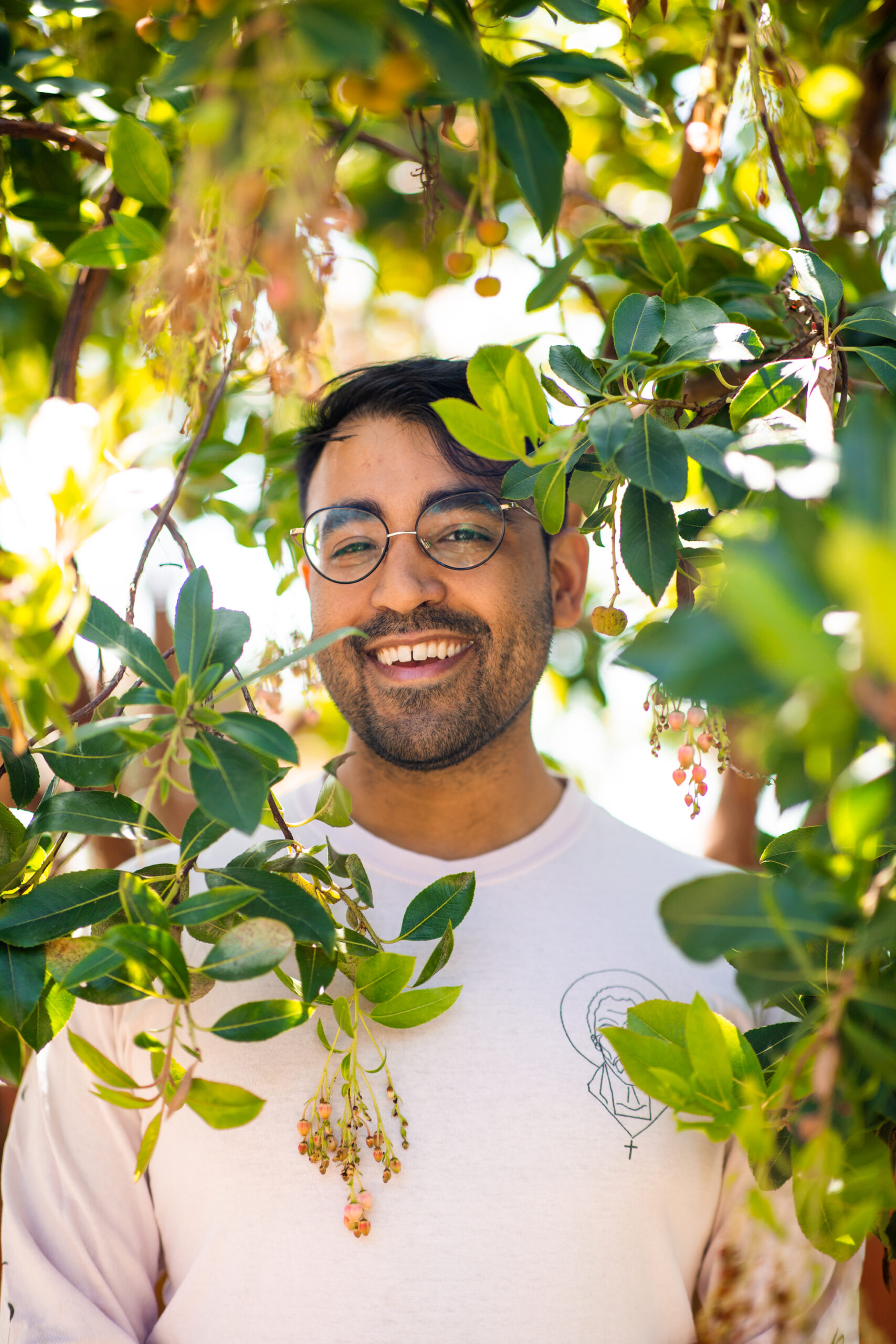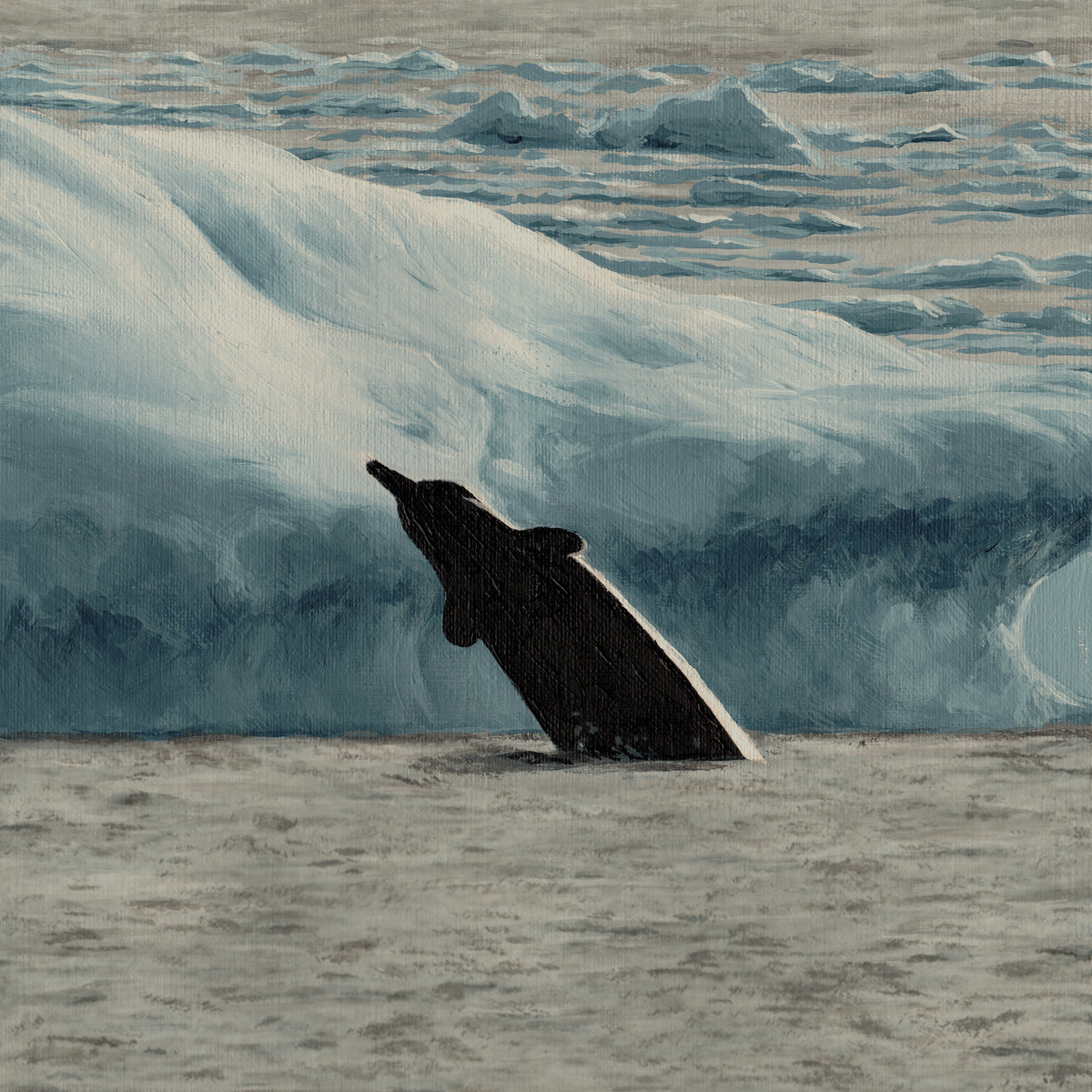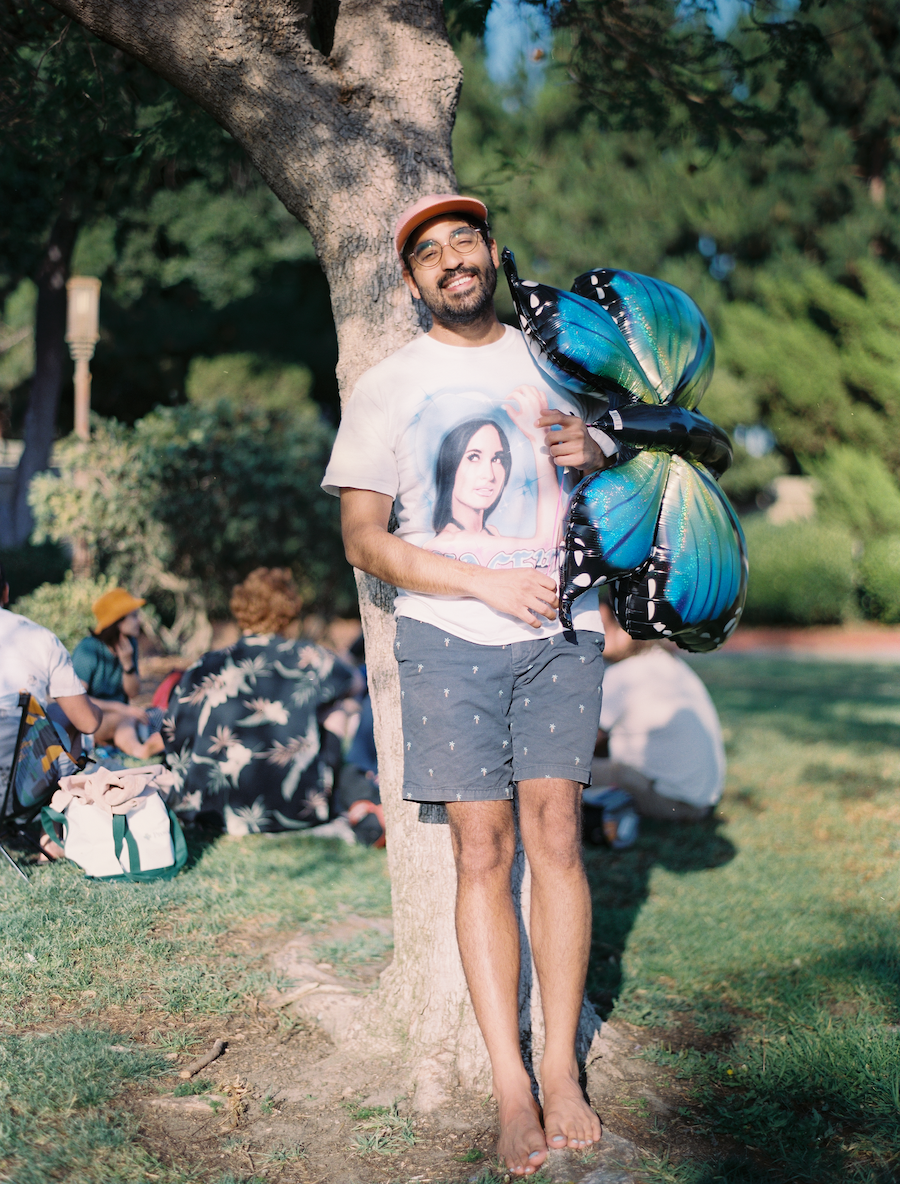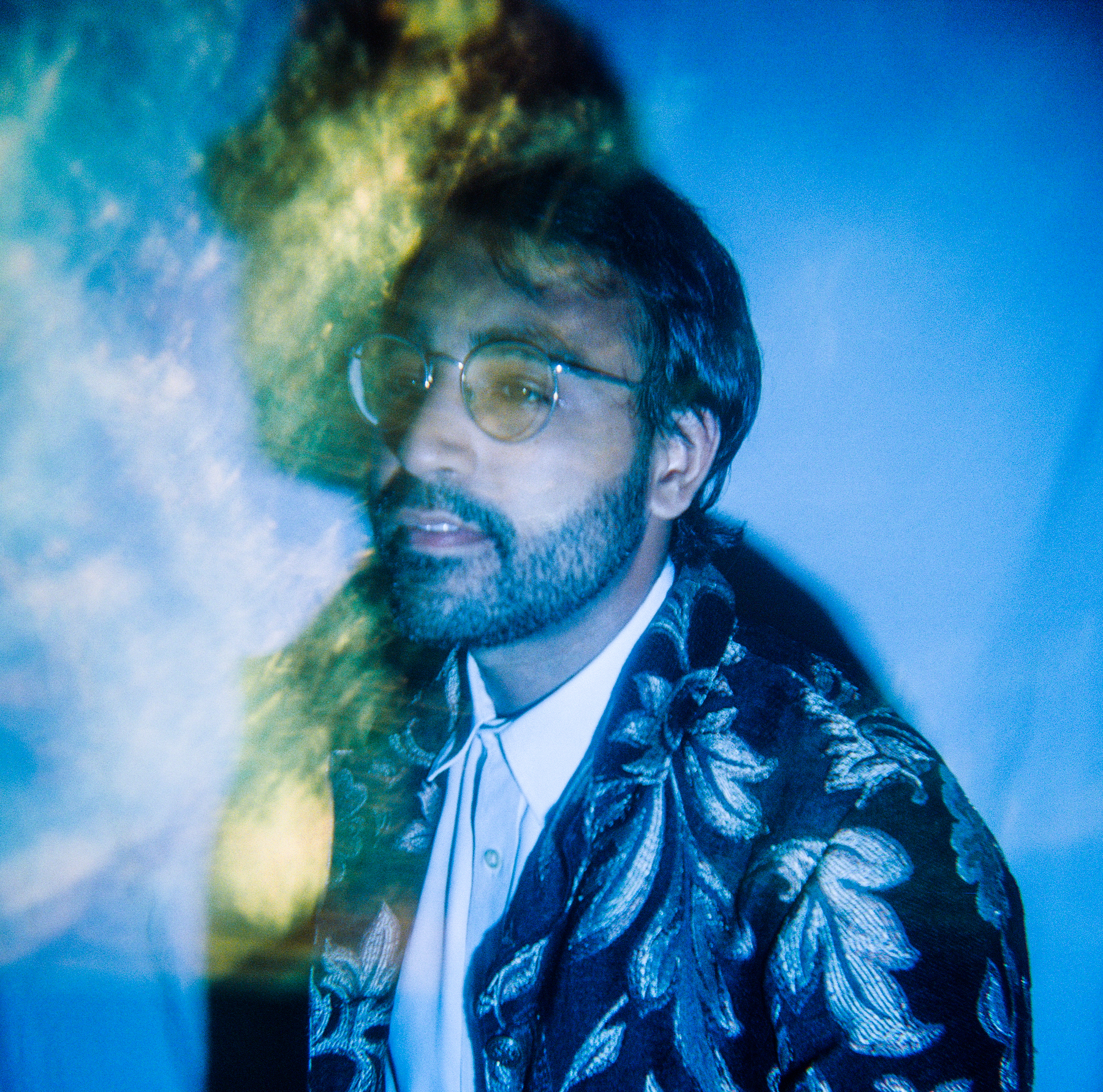Sun Kin, AKA LA-based musician Kabir Kumar, pivoted in a new direction earlier this year with the release of painting whales, part 1, a collection of ambient tracks rooted in the natural world. The release took particular interest in beaked whales, some of the deepest-diving and least understood of all the Cetacea infraorder. “The challenge became evoking […] cetacean ideas in music,” we wrote in a review, “forcing a move away from Sun Kin’s typical pop tones and into sonic textures large and spacious enough for their inspiration.” What emerged was an EP both meditative and melancholy, capturing both the isolated mystery of the beaked whales and their connection to the wider patterns of aquatic life. A release “steeped in the calm melancholy of the natural world,” as we put it:
A sadness in part derived from a newfound fragility within such systems for which humanity bears sole responsibility. From the general catastrophe of the dawning climate disaster to the more species-specific dangers of man-made sound interfering with cetacean communication, the relaxed songs of Painting Whales, Part 1 are haunted by a lingering sense of sorrow. The sensation of things deteriorating, however slowly that might be.
Now Sun Kin has returned with painting whales, part 2, a brand new EP Kumar continue to explore the Ziphiidae family of whales, shifting the focus to take the themes in a new direction. Because if the first part homed in on the detached nature of this poorly understood group of animals, part 2 instead addresses the ways in which they are connected to humans. Be that the rare, brief encounters as they come up for air (‘surfacing’), to some of the shared traits which date back along the phylogenetic tree to our common ancestors. Characteristics we often wrongly label human—from familial bonds and community to feelings of empathy, acts of altruism and experiences of mourning and grief.
The new angle shapes the sound, losing none of the spaciousness of part 1 but repurposing its icy drone into something warmer and more humane. Here Sun Kin capture the agility of these animals with almost playful confidence, the bass guitar rising and falling with the inquisitive nimbleness of aquatic mammals, and all manner of synths, samples, electric piano and sax add to the brightness. Consequently, the expansive tones of ‘nursery talk’ feel more applied to time than space, a sense of patience emerging where isolation might have flourished on the previous release. So to on ‘Time to Move’, a track of migration, perhaps even outside pressures, marked by the sadness of moving but benevolence too. As though leaving is not a solitary experience, but the cooperative act of a close-knit group.
We took the opportunity to speak with Kumar to get more of an insight into the project.
Hi Kabir, thanks so much for taking the time to speak to us, and congratulations on painting whales, part 2. Did you always intend for the project to have multiple parts?
Thank you so much for listening! My fullest vision for this series is a full length album that combines the two released parts and adds new material. painting whales should be released next year by the LA-based cassette label never content. But while putting it together, I felt a natural division between the two “halves” of the record and thought it would be interesting to see how the experience changed in listening to each separately.
Could you give us a little on the background of the project? I understand it started with a picture of an Arnoux’s beaked whale?
Yes—it was a photograph of an Arnoux’s beaked whale in mid-breach, taken in Alaska by Ted Cheeseman and tweeted out by my friend Daniel Bromfield, who also co-wrote “surfacing” on part 2. The breaching whale doesn’t look like a majestic humpback, its thin, not-quite-dolphin body silhouetted blankly against an ice shelf. It feels mysterious and alien-like, and even moreso after learning how little is still known about these whales, which are rarely even sighted, much less studied in close detail. We joked about making an icy, distant ambient album using the photograph as its cover, and painting whales was born.
[bandcamp width=100% height=120 album=4267295401 size=large bgcol=ffffff linkcol=0687f5 tracklist=false artwork=small track=2056106984]
Drawing on cetacean imagery to conjure feelings of isolation and melancholy, part 1 for the most part painted the whales as cold, disconnected creatures, but would you say there’s a different mood to part 2? A warmer, more compassionate sound which allows a certain empathy to flourish?
By the time I was finishing up this batch, the pandemic was thawing a bit. With less time spent still and by myself, I knitted together voice memo samples, my own improvised performances and various instruments played by talented friends (Bromf, Jamin Reyes, Miserable chillers, DI LEO, Mitch Rocket) so that songs would unfold themselves rather than my deliberately composing them. It reflected my own mood, having just moved to Los Angeles and joined an immense community of other artists, as well as my renewed desire to work within the imperfections of live instrumentation.
Is the natural world something you’ve always wanted to explore in your work?
Yes! Sun Kin means “family of the Sun.” I would say that all forms of nature imagery have found their way into my lyrical work, especially those related to water. I’m actually kind of scared of the ocean (even though I’ve always lived by one!), which probably contributed to my interest in this project. As a kid I had a lot of dreams about tidal waves destroying cities…
[bandcamp width=100% height=120 album=4267295401 size=large bgcol=ffffff linkcol=0687f5 tracklist=false artwork=small track=2129411175]
Speaking more generally, the painting whales series is something of a stylistic departure for Sun Kin. Could you talk a little about how you came to branch out in this ambient direction, and perhaps how you balance it with the alt-pop/art rock side of things? Do the two inform one another in any manner? Did you consider using a different moniker?
It feels funny to say this because I wouldn’t say either part feels particularly “playful”, but painting whales has been an attempt for me to express myself in a more playful way musically, to unravel structures and patterns I had built around my pop compositions and give myself something I could just breathe to. At the outset of the project, I had just started working with subtractive synths, and I used it as an excuse to explore sequencing MIDI, manipulating voice memos, and performing instrumental pop melodies at implausibly slow tempos.
I think my ambient work informs my pop work by appealing to simplicity and patience. My work before and after working on this album feels different, perhaps because the glacial pace of these songs meant zooming way out to find and emphasize the elements that implied movement. It translates into brevity in my other work— a desire to find the most emotionally appealing part of a song and help it move forward narratively.
I often consider changing my moniker. I’ve released music as Sun Kin since 2012, so it’s pretty familiar to me by now. But in the end, this is a solo project with no accountability to anyone but myself, so keeping my name the same across genres feels like an attempt to help catalog my multitudes and make sure any type of music I release is made with the same amount of care and love.
[bandcamp width=100% height=120 album=4267295401 size=large bgcol=ffffff linkcol=0687f5 tracklist=false artwork=small track=811197312]
On that note, could we talk about influences? The press release cites artists like Laurel Halo, Laurie Anderson and Kara-Lis Coverdale as key figures. How did their work come to shape your own? Are there any other key sources you’d point towards?
I love the way experimental music feels like play, how it reminds us that life is mostly accidental and can be most beautiful when seen oddly. Laurie Anderson in particular always feels like an artist in flux. You can’t always pin down how she feels about what she’s showing you, but it always gives you the sense of a life-changing voyage guided by your favorite art teacher. Laurel Halo and Kara-Lis Coverdale both play with musical expectations as well, mixing jazz and classical-inspired melodies with textures that feel abstractly expressive (something I tried to channel into “seafloor banquet”). Laurel Halo’s work is a bit more grounded and sinister, while Kara-Lis feels more ethereal and otherworldly. I tend to think that beaked whales sound in the space between those moods. But we can’t know for sure.
[bandcamp width=100% height=120 album=4267295401 size=large bgcol=ffffff linkcol=0687f5 tracklist=false artwork=small track=3208579857]
painting whales, part 2 is out now and available from the Sun Kin Bandcamp page. Keep an eye on the never content page for more on the cassette release.




